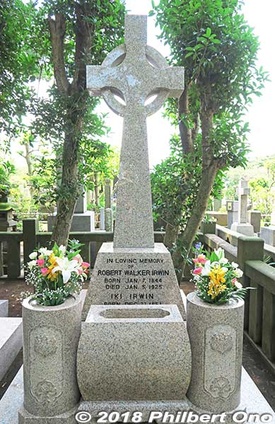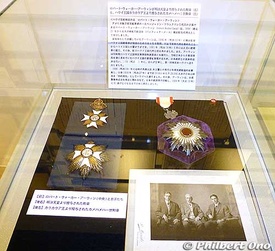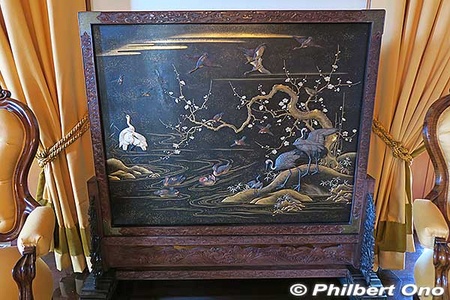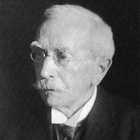Here are places where you can see exhibits, artifacts, documents, etc., related to Robert Walker Irwin.
* * * * *
Hawaiian Minister’s Ikaho Villa, Shibukawa, Gunma Prefecture
Founded over 1,300 years ago, Ikaho is a famous hot spring town on the cool slope of Mt. Haruna. By the 19th century, it was a popular retreat for many dignitaries and celebrities including the Imperial family who had a villa there until 1945. Famous artists and novelists like Takehisa Yumeiji and Natsume Soseki were also Ikaho regulars.
Today, Ikaho is a relaxing hot spring for everyone. Ikaho’s main drag is the narrow Stone Steps (for pedestrians only) that go up the mountain slope for a few hundred meters. A charming path lined with tourist shops, eateries, inns, and public bath.
In 1891, as recommended by close friend and former Japanese Foreign Minister Inouye Kaoru, Irwin bought a spacious villa near the bottom of the Stone Steps and spent every summer there. A small part of the villa still remains as a two-story wooden building (above left photo) on the original site overlooking a garden. In 2013, it was completely disassembled and restored, so it doesn’t look that old. Open to the public.
Next to it is a modern building called the Guidance Facility (above right photo) displaying things from the Irwin family. They include documents, letters, family photos, tableware, personal effects, and a Koa calabash bowl from sister city Hilo, Hawaiʻi. Some English captions and an English pamphlet are provided.
The property also has a small Japanese maple tree planted in memory of Auntie Dottie Thompson, the co-founder of the annual Merrie Monarch Festival hula competition in Hilo. Ikaho used its Irwin connection to start the Ikaho Hawaiian Festival every summer since 1997. Under the auspices of the Merrie Monarch Festival in Hilo, Ikaho’s four-day Hawaiian festival has hula dancers from all over Japan performing on multiple stages highlighted by a top hālau (hula school) from Hawaiʻi in the evenings.
From Tokyo, getting to Ikaho is easy by JR Bus from the Buster Shinjuku bus terminal at JR Shinjuku Station. It takes about 2.5 hours. Get off at the Ikaho Ishidangai stop at the bottom of the Stone Steps. Day trippers can store luggage in lockers near the bus stop. Go up the Stone Steps for about 100 meters and Irwin’s villa will be on the right.
Open 9 am–4:30 pm, closed Tues. Free admission.
Address: Ikaho 29−5, Ikaho-cho , Shibukawa, Gunma
• English pamphlet
• Photos
• Map
Japanese Overseas Migration Museum, Yokohama
Operated by the Japan International Cooperation Agency (JICA), Japan’s version of the Peace Corps, the spacious Japanese Overseas Migration Museum has permanent and changing exhibitions related to Japanese emigration. The exhibits explain Japanese emigration to places like Hawaiʻi, the US mainland, and Brazil with a good collection of documents and antiques like immigrants’ luggage and personal effects.
It also has a small display case (photo) for Robert Walker Irwin. It contains two medals awarded to Irwin by the Hawaiian Kingdom (Royal Order of Kamehameha I, Knights Grand Cross Star) and Japanese government (The Order of the Rising Sun). They came from granddaughter Yukiko Irwin’s estate (Yukiko Irwin Trust). There is also a photo of Irwin and his two grown sons Robert Jr. and Richard.
The museum is a short walk from JR Sakuragicho Station (Keihin-Tohoku Line) or Bashamichi Station (Minato-mirai Line).
Open 10 am–5:30 pm, closed Mon. Free admission.
Address: 2-3-1, Shinko, Naka-ku, Yokohama, Kanagawa.
• Website
• Map
Aoyama Cemetery, Tokyo

Most of Robert Walker Irwin’s family members are buried at Aoyama Cemetery. The Irwin gravesite has five gravestones and two stone monuments. The tallest gravestone is for Robert Walker, wife Iki, and eldest daughter Bella. The same plot has graves for Robert Jr. and his first wife Fusako, Richard and his son Takeo, Robert Walker’s second daughter Mary, and Robert Jr.’s third wife Tsuneko Irwin. Small portions of the ashes of grandchildren Yukiko and John are also buried here in their respective parent’s grave. All the gravestones are in English.
Operated by the Tokyo Metropolitan Government, Aoyama Cemetery is Japan’s first public cemetery with over 128,000 graves occupying prime real estate in central Tokyo. Famous for cherry blossoms and the graves of many statesmen, company founders, foreigners, and celebrities. They include Hachiko (loyal dog from Shibuya) and his master Ueno Hidesaburo and a foreigners’ section of prominent foreigners who helped to modernize Japan in the late 19th century. The Irwin graves are not in the foreigners’ section, but it is nearby.
Short walk from Gaienmae Station (Ginza/Hanzomon Line) or Nogizaka Station (Chiyoda Line).
Address: 2-33 Minami-Aoyama, Minato-ku, Tokyo
• Map
Diplomatic Archives of the Ministry of Foreign Affairs in Tokyo
In 1985, for the centennial of Kanyaku Imin, grandson John Irwin donated a large collection of Robert Walker Irwin documents to the Archives. They are available for public viewing. Reservations are required for using the Reading Room.
Near Kasumigaseki Station (subway), Exit A4 or A8.
Open 10 am–5:30 pm, closed Sat., Sun., national holidays. Free admission.
Address: 5-3-1 Azabudai, Minato-ku, Tokyo
• Website
• Map
Irwin Gakuen, Tokyo
The nursery and preschool teacher-training school started by Bella Irwin in 1916 is now well established in Suginami Ward. It moved to its present location in 1952, and celebrated its 100th anniversary in 2016. It has trained about 4,000 preschool teachers. Through this school, Irwin’s name and legacy lives on in Japan. Note that the school is not open to the public, and there are no Irwin-related public exhibits.
Address: Shoan 1-9-33, Suginami-ku, Tokyo
• Website
ʻIolani Palace, Honolulu
In Jan. 1885, Irwin went on board the SS City of Tokio with the first Kanyaku Imin contract laborers traveling to Honolulu. As a gift for King Kalakaua, he brought this Shibayama inlay lacquered tsuitate wooden screen, now displayed in the Music Room of ʻIolani Palace. The screen shows birds and plum blossoms. Shibayama inlay crafts were popular among Westerners in the late 19th century. In 2008, the screen was restored and unveiled by the Friends of ʻIolani Palace.
Irwin also brought large vases bearing the Imperial crest, now displayed on the first floor of the palace.
In 2012, grandson John Irwin donated a number of letters from King Kalakaua and medals belonging to Robert Walker Irwin. As of this writing, they are not yet publicly displayed.
• Website
*Special thanks to the Discover Nikkei editing staff and Steven Berzin for editing and permission to use images and text from the Yukiko Irwin Trust.
Further reading
“Robert Walker Irwin” (Photoguide.jp)
“Japanese-American and Nikkei Museums in Japan” (Photoguide.jp)
Major references
Kuykendall, Ralph. The Hawaiian Kingdom Volume III 1874-1893. Honolulu: University of Hawaii Press. 1967.
Kuykendall, Ralph. The Hawaiian Kingdom. University of Hawaii Press, 1938.
ユキコ・アーウィン (Yukiko Irwin) 『フランクリンの果実』文藝春秋、 1988.
Franklin Odo, Kazuko Shinoto 『図説ハワイ日本人史1885~1924』Bishop Museum Press, 1985.
Lueras, L. A Hundred Years of Japanese Life in Hawaii-Kanyaku Imin. 1985.
Armstrong, William N. Around the World with a King. FA Stokes Company, 1904.
Daws, Gavan. Shoal of Time: A history of the Hawaiian Islands. Honolulu: University Press of Hawaii, 1968.
Okihiro, Gary. Cane Fires: The anti-Japanese movement in Hawaii, 1865-1945. Temple University Press, 1992.
Ikaho-cho Board of Education. Robert W. Irwin Bettei Summer Residence and Pamphlet. 2018
Japan America Society of Greater Philadelphia. Phila-Nipponica: A Historic Guide to Philadelphia & Japan. Philadelphia: Japan America Society of Greater Philadelphia, 2015.
松永秀夫『ハワイ管約移民の父 R.W.アーウィン』(株)講談社ビジネスパートナーズ、2011.
ウィリアム・N. アームストロング(著)、荒俣宏、樋口あやこ(訳)『カラカウア王のニッポン仰天旅行記』小学館、2000。
Irwin Gakuen: website
New York Times article archive
© 2020 Philbert Ono









